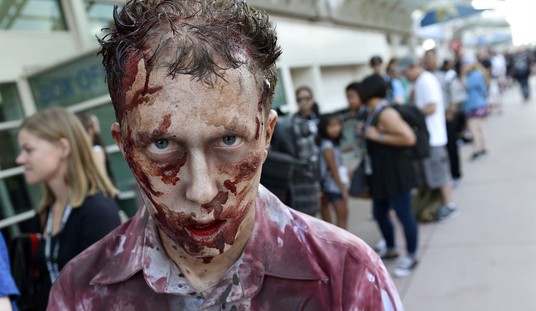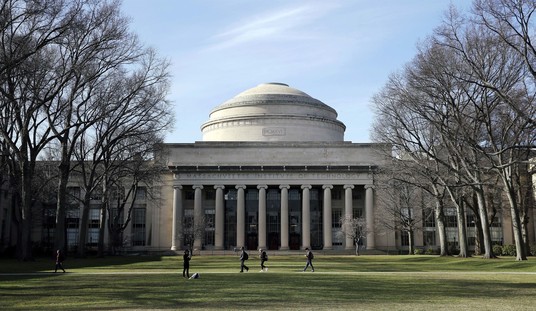A couple days ago I wrote about a scary home invasion in San Francisco. A man wearing hospital clothing with blood on his face broke into a woman’s home, ran around smashing a few things and then made his exit by jumping out of a 3rd story window. A neighbor later found a severed finger in his lawn.
The scariest part of the story was that it wasn’t the first time something like this had happened in the same neighborhood. Other neighbors had seen men in hospital clothing commit crimes in the area. Where was all of this coming from?
The home invasion story didn’t say where this was coming from but yesterday the SF Chronicle published a story in which Dr. Scott Tcheng related some of his experiences working in a San Francisco emergency room.
One man who arrived by ambulance looked like the Joker, his face and hands covered in animal blood. A 911 caller had spotted him eating a raccoon crushed by a car on a city street.
Tcheng has treated patients high on methamphetamines who are convinced a mouse is crawling inside their body or that someone has cut off their genitals with a sword…
Just the other day, Tcheng treated a 31-year-old woman who is homeless, suffers from schizophrenia and has come to the ER about 150 times — usually to request pregnancy tests, but sometimes just for food and a place to sleep…
Other patients suffering from severe, untreated mental illness or meth-fueled psychosis have become violent toward hospital staffers, wrecked medical equipment, brandished knives and hurled their own feces. Some return to the ER shockingly often. Tcheng said one of his patients has visited emergency rooms around San Francisco hundreds of times in the past year.
Dr. Tcheng works at four different ERs in the city and says all of them are frequently overwhelmed with psychiatric patients, to the point that regular patients for things like car crashes have to wait.
An SF social worker told the Chronicle the city’s emergency rooms had become, “extensions of the Tenderloin with ambulances providing taxi service in between.” The Tenderloin is the neighborhood Mayor London Breed recently declared a state of emergency. The effort to clean it up involves a lot of trucks power washing the sidewalks daily and also a “Linkage Center” which is basically an open air drug market and supervised drug use site. The goal of the Linkage Center is to convince addicts to accept help but in one recent week the center had 2,700 visitors and only 9 requests for a drug abuse referral. It’s not clear how many of those nine followed through and actually sought help but in the same week there were four overdoses at the site which were reversed with Narcan.
Dr. Tcheng has seen a similar refusal of help from homeless drug addicts he’s treated in the past including a woman who became known as Princess Leia:
Neighbors in the Castro knew her as Princess Leia because she often wore her long hair in two buns on the sides of her head, sometimes held together with syringes. Supervisor Rafael Mandelman knew her as Individual M, a reference to her placement on his list of 17 distressed and distressing people in his district whom he tries to help with intensive services.
Countless others recognized her only as the woman they saw repeatedly walk into traffic at Castro and Market streets and narrowly miss getting whacked by a car. She prompted numerous calls to 911 and 311.
But the concern could not save her. Not in this city long on professed compassion, but short on the help needed to make a difference.
And so in an unsurprising end to her sad life, Mary Elaine Botts died Nov. 18 of a drug overdose. She was 28.
Tcheng treated Mary Botts a dozen times but she never wanted help with her addiction so he had to release her back onto the streets.
This is the cycle that repeats on a loop in San Francisco. Drug addicts become homeless because feeding their habit is all they care about. They wind up on the streets, living in tents in the Tenderloin where they create a mess the city has to deal with on behalf of business owners. Having no other means of support, they steal from retailers and trade the money made on stolen merchandise for drugs. The ERs become a place they go when they need immediate help and also a place they request to go if they’re arrested for theft, knowing the cops often don’t have time to wait around at the hospital for them to be released. Even if they are booked they are back on the street in hours with no bail and usually no long term consequences. Homeless addicts in these cities can be arrested hundreds of times and still wind up back on the street. The cycle repeats until the addict overdoses or harms someone else enough to wind up in prison.
The Chronicle story says the city would need at least 400 psychiatric treatment beds to deal with the current problem but that’s only a tiny fraction of the number of homeless drug addicts in San Francisco. One of the things I’ve noticed in reading about these cases up and down the west coast is that homeless addicts often believe they’ll move past this stage of their life some day, just not today. Today, they’re going to get high. And tomorrow it will be the same. And the city really has no plan to deal with people like this, many of whom are self-medicating some private pain at the expense of everything and everyone else around them.
The other day I posted part one of an NBC video series titled Saving San Francisco. This is loosely focused on one homeless man known as “The Man in the Woods.” Here’s part 2 of that series which is about how to get help for people who don’t want it in a city where a lot of people think the homeless should just be left alone.








Join the conversation as a VIP Member